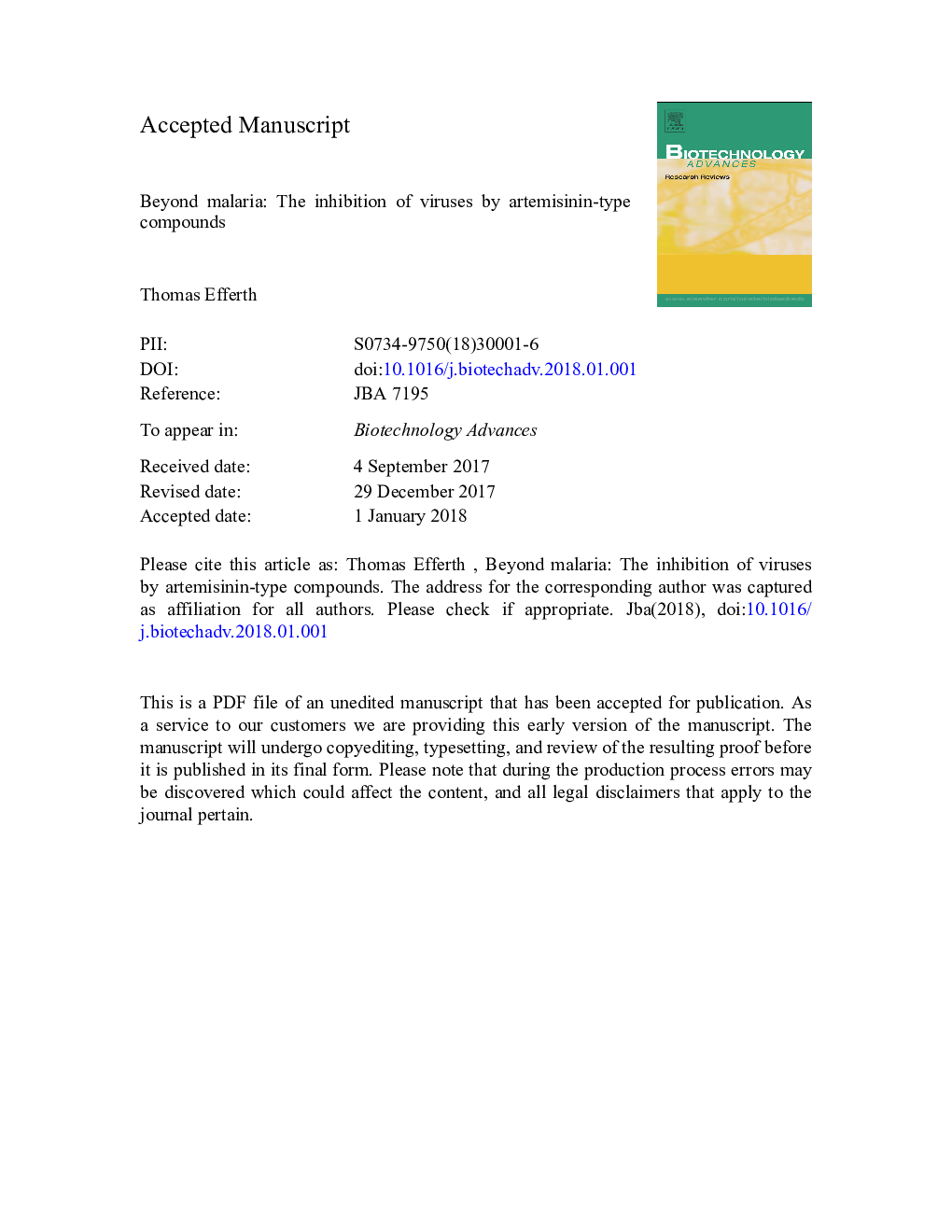| Article ID | Journal | Published Year | Pages | File Type |
|---|---|---|---|---|
| 6486539 | Biotechnology Advances | 2018 | 26 Pages |
Abstract
Natural products represent valuable chemical scaffolds for drug development. A recent success story in this context was artemisinin, which is not only active against malaria but also to other diseases. This raised the interest of artemisinin's potential for drug repurposing. On the present review, we give an overview on artemisinin's antiviral activity. There is good in vitro and in vivo evidence for the activity of artemisinin and its derivatives against DNA viruses of the Herpesviridae and Hepadnaviridae families such as cytomegaloviruses, human herpesvirus 6, herpes simplex viruses 1 and 2, Epstein-Barr virus and Hepatitis B virus. The evidence is weaker for Polyomaviruses and papilloma viruses. Weaker or no inhibitory activity in vitro has been reported for RNA viruses such as human immunodeficiency viruses 1 and 2, hepatitis C virus, influenza virus and others. Interestingly, the artemisinin derivative artesunate did not exert cross-resistance to ganciclovir-resistant HCMV and exerted synergistic inhibition in combination with several clinically established antiviral standard drugs. The antiviral activity of first generation artemisinin derivatives (e.g. artesunate, artemether, etc.) was enhanced by novel derivatives, including dimer and trimer molecules. First results on patients indicating activity in a subset of HCMV patients. Novel developments in the field of nanotechnology and synthetic biology to bioengineer microorganisms for artemisinin production may pave the way for novel drugs to fight viral infections with artemisinin-based drugs.
Keywords
polyomavirus BKArtemisia annuaJCPyVHCMVBVDVHHVIC50HSV-1EBTR50% inhibitory doseROSSesquiterpeneEBVAIDSBKVAntiviral therapyacquired immunodeficiency syndromeHuman cytomegalovirusPhytochemicalsHBVHCVHepatitis C virusEpstein-Barr virusbovine viral diarrhea virusHuman herpesvirushuman immunodeficiency virusHIVhepatitis B virusHuman papillomavirusHPVReactive oxygen species
Related Topics
Physical Sciences and Engineering
Chemical Engineering
Bioengineering
Authors
Thomas Efferth,
